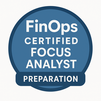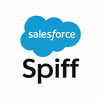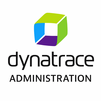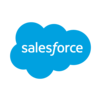 Training.jpg)
The Salesforce App Builder (DEV 401) Training is designed to equip developers with the skills needed to build custom applications on the Salesforce platform. This course covers key topics such as Apex programming, Visualforce page development, automation with Process Builder and Flow, and data management. Participants will gain hands-on experience in customizing Salesforce, ensuring they can create scalable solutions to meet unique business requirements and enhance user experiences.
Salesforce App Builder (DEV 401) Training Interview Questions Answers- For Intermediate
1. What are the different types of workflows in Salesforce?
Salesforce supports four types of workflow actions: Field Updates, Email Alerts, Outbound Messages, and Task Creation. Workflows help automate processes such as sending emails, updating fields, creating tasks, or triggering outbound messages, all based on specific criteria.
2. What is a Visualforce page in Salesforce?
A Visualforce page is a user interface framework that allows developers to build custom pages within Salesforce. It uses HTML, CSS, and Apex code to create custom layouts, forms, and interactions. Visualforce pages can be embedded within Salesforce or used in external applications.
3. What is a "Custom Setting" in Salesforce, and how is it used?
Custom settings in Salesforce are similar to custom objects but are used to store static data that can be accessed by Apex code, formulas, and validation rules. They are useful for storing application-level configurations or frequently used data that need to be easily accessible.
4. What is the use of "Static Resources" in Salesforce?
Static resources in Salesforce allow you to upload and store files like images, stylesheets, JavaScript libraries, and other assets that can be used across your Salesforce organization. They are primarily used in Visualforce pages, Lightning components, and custom apps.
5. Explain the difference between "Standard" and "Custom" Lightning components.
Standard Lightning components are pre-built components provided by Salesforce, such as lightning:button or lightning:input. These components are ready to use and follow Salesforce's design system. Custom Lightning components, on the other hand, are created by developers to fulfill specific needs using Aura components or Lightning Web Components (LWC).
6. What is a "Profile" in Salesforce?
A profile in Salesforce defines the access level for users to objects, fields, and records. It specifies the permissions users have to perform various actions, such as viewing, creating, or editing records. Profiles are used to control user access at a granular level.
7. What is a "Permission Set" in Salesforce, and how is it different from a profile?
A permission set in Salesforce is a collection of settings and permissions that grant users additional access beyond what is assigned by their profile. While profiles are assigned to users and define the basic permissions, permission sets allow for more granular permission assignments without changing the profile itself.
8. What is the purpose of the "Test.startTest()" and "Test.stopTest()" methods in Apex?
The Test.startTest() and Test.stopTest() methods are used in test classes to separate the setup and actual test execution logic. They help reset governor limits, allowing for more accurate testing, especially when testing complex operations. They also ensure that asynchronous operations like future methods or batch jobs are executed during testing.
9. What is an "External Object" in Salesforce?
An External Object in Salesforce represents data stored outside of Salesforce, typically in an external system or database, that can be accessed and interacted with through Salesforce. These objects are similar to custom objects but link to data in external systems, accessed via Salesforce Connect.
10. What is "Salesforce Connect," and how does it work?
Salesforce Connect is a feature that allows you to integrate external data sources with Salesforce in real-time. It uses external objects to link Salesforce with systems such as SQL databases, ERP systems, and other third-party applications. It provides seamless data access without moving data into Salesforce.
11. What is an "Apex Trigger Context Variable," and what are some common context variables in triggers?
Apex Trigger Context Variables are predefined variables that provide information about the trigger's execution. Common context variables include Trigger.new (new records in an insert or update trigger), Trigger.old (old records in an update or delete trigger), Trigger.isInsert (boolean indicating if the trigger is on insert), and Trigger.isUpdate (boolean indicating if the trigger is on update).
12. How does Salesforce handle data security for Apex classes?
Salesforce ensures data security by enforcing "sharing rules" in Apex classes. Using the "with sharing" and "without sharing" keywords, developers can control whether the class adheres to the organization’s sharing settings. "With sharing" enforces the user's permissions and visibility, while "without sharing" bypasses these rules, providing unrestricted access to records.
13. What is a "Flow" in Salesforce, and how does it differ from a Process Builder?
A Flow in Salesforce is a powerful tool that allows you to automate business processes through a series of screens, actions, and decisions. It provides more flexibility than Process Builder by allowing for user input, loops, and advanced logic. While Process Builder is ideal for simple automation, Flows are used for more complex scenarios.
14. What is a "Custom Metadata Type" in Salesforce?
A Custom Metadata Type is a special kind of custom object that allows you to define and manage metadata records in Salesforce. Unlike custom objects, Custom Metadata Types are deployable through change sets, and their records are accessible in Apex code, enabling dynamic configuration and customizable application behavior.
15. What is the use of "Dynamic Apex" in Salesforce?
Dynamic Apex refers to the use of dynamic SOQL, dynamic SOSL, and other programmatic techniques to query or modify metadata in Salesforce. It enables you to write more flexible and reusable code by working with objects, fields, and records dynamically at runtime. This is especially useful when the structure of your data changes over time.
Salesforce App Builder (DEV 401) Training Interview Questions Answers - For Advanced
1. What is the difference between Apex and Visualforce in Salesforce?
Apex and Visualforce are both integral parts of the Salesforce platform, but they serve distinct purposes. Apex is a server-side programming language that allows developers to write business logic, perform complex calculations, and interact with the Salesforce database. It is primarily used for custom business processes that require automation or integration, such as handling DML operations, complex data processing, or external web service calls. Visualforce, on the other hand, is a framework for building custom user interfaces within Salesforce. It enables developers to create pages that are tailored to specific business needs, allowing for custom forms, layouts, and complex page interactions using HTML, CSS, and Apex. While Apex focuses on backend logic, Visualforce focuses on frontend UI design, but both can be used together to create a fully customized Salesforce experience.
2. How do you implement dynamic security in Salesforce using profiles and permission sets?
Dynamic security in Salesforce is about controlling user access to records and data based on business rules. Profiles are a fundamental part of Salesforce's security model, specifying a user’s access to objects, fields, tabs, and other features. They define baseline access for users across the organization. Permission sets, however, provide more granular control and can be used to give additional permissions to users without altering their profile. This allows for flexibility in granting permissions on a case-by-case basis. For dynamic security, you would typically use a combination of both profiles and permission sets, ensuring users have the appropriate level of access based on their role and responsibility within the organization. Additionally, Apex sharing rules can be implemented for programmatic control over data visibility, allowing developers to tailor data access dynamically through custom business logic.
3. How would you handle recursive triggers in Salesforce?
Recursive triggers in Salesforce occur when a trigger causes itself to fire repeatedly, leading to issues such as exceeding governor limits or causing unintended side effects. To handle recursive triggers, you can use static variables to prevent the trigger from running multiple times within the same transaction. By setting a static variable to track the execution state, the trigger can check if it has already been executed and skip the logic if necessary. This is particularly useful in scenarios where a trigger might update a record, causing it to fire again. Another strategy involves designing your triggers to be bulkified, ensuring they are optimized for large sets of data and are less likely to hit recursive issues when processing records in bulk.
4. What is the significance of Salesforce's Multi-Tenant Architecture?
Salesforce’s multi-tenant architecture is a key aspect of its platform that allows multiple customers (tenants) to share the same infrastructure while maintaining data isolation and security. In this architecture, Salesforce hosts one instance of the software, but each customer’s data is logically separated from others through metadata-driven customization and security mechanisms. This allows Salesforce to provide cost-effective cloud services, where updates and improvements to the platform are rolled out to all customers at once, without affecting their unique configurations or data. While this architecture offers efficiency and scalability, it also imposes constraints, such as governor limits and shared resources, which developers must take into account when building applications on the platform.
5. Explain the concept of "Bulkification" in Apex code. Why is it important?
Bulkification refers to writing Apex code that can handle large volumes of records in a single operation without exceeding Salesforce's governor limits. In Salesforce, a single transaction can process a maximum of 50,000 records for DML operations or queries, and hitting this limit can lead to failures. To ensure that Apex code can efficiently handle multiple records, developers must design their code to process records in bulk rather than individually. This includes using collections like lists, sets, and maps to group records and performing DML operations and SOQL queries in bulk. Bulkification is essential for writing scalable, efficient code that can handle large datasets, and it ensures that Salesforce’s governor limits are respected.
6. How does Salesforce handle asynchronous processing and what are the different types?
Salesforce provides several mechanisms for asynchronous processing, which allows long-running tasks to be handled in the background without blocking the user’s interaction. These mechanisms include Future Methods, Queueable Apex, Batch Apex, and Scheduled Apex. Future Methods are used for non-blocking calls that can execute operations like HTTP requests or complex calculations outside the transaction context. Queueable Apex is more flexible, allowing developers to queue jobs that can be chained or processed in parallel. Batch Apex is used for processing large datasets in manageable chunks, ensuring that the governor limits are not exceeded when processing thousands or millions of records. Scheduled Apex allows developers to run Apex classes at specific times, such as nightly data synchronization. Asynchronous processing is crucial in maintaining performance and ensuring that complex tasks do not hinder the user experience or exceed system limits.
7. What is Salesforce's data storage model and how does it affect custom development?
Salesforce uses a multi-layered data storage model to manage both transactional and metadata data. This includes the use of standard objects (like Accounts and Contacts) as well as custom objects that are created by developers to meet business needs. Custom fields, records, and objects consume storage space, and Salesforce provides limits based on the edition of the platform. Developers must be mindful of these limits when designing applications, particularly in cases where large amounts of data are being stored or processed. Efficient use of indexes, selective queries, and minimizing unnecessary data storage can help optimize performance. Additionally, custom objects and fields can have a direct impact on both API limits and storage capacity, which makes it important for developers to design data models that balance functionality with resource usage.
8. How does Salesforce handle metadata management and deployment?
Salesforce provides several tools for managing and deploying metadata across environments, including Change Sets, the Metadata API, and Salesforce DX. Change Sets allow for the easy transfer of custom components like Apex classes, Visualforce pages, and custom objects between sandboxes and production environments using a point-and-click interface. The Metadata API provides a programmatic approach for managing Salesforce metadata, making it suitable for automated deployment processes or integrating with external systems. Salesforce DX, a newer development framework, offers version control integration, making it possible to manage Salesforce code using Git. Salesforce DX is ideal for modern DevOps practices, as it allows for continuous integration and delivery pipelines that manage metadata changes across different environments.
9. What is a "Record Type" in Salesforce, and how is it used?
A Record Type in Salesforce is a powerful tool that allows developers to configure and differentiate the business processes, page layouts, and picklist values available to users based on specific criteria. For example, a company may have different processes for handling sales leads and service requests. By creating separate record types, each type can have unique page layouts, fields, and workflows tailored to the business process it represents. Record Types also control which picklist values are available, ensuring that users see the appropriate options based on the type of record they are working with. This allows organizations to manage complex workflows and processes within a single Salesforce instance while maintaining clarity and relevance for different users.
10. How do you ensure data consistency and integrity in Salesforce?
Ensuring data consistency and integrity in Salesforce is critical for maintaining accurate business records. This is typically achieved through validation rules, triggers, workflow rules, and process builder automations. Validation rules enforce data quality by ensuring that only valid data is entered into Salesforce, such as enforcing mandatory fields or verifying data formats. Triggers can be used to perform more complex validations or calculations, while workflow rules and Process Builder can automate data updates or task creation based on business logic. Additionally, Apex can be used for more advanced data integrity logic, ensuring that business rules are strictly followed. Integrating external systems using tools like Salesforce Connect can also help maintain data consistency by synchronizing data between Salesforce and other systems.
11. What is the role of "Lightning Flow" in automating processes within Salesforce?
Lightning Flow is an automation tool within Salesforce that helps users automate business processes with minimal coding. It consists of two components: Flow Builder and Process Builder. Flow Builder allows developers to create sophisticated automation processes through a visual interface, such as guiding users through multi-step forms, collecting inputs, or automatically updating records based on user decisions. Autolaunched flows can be triggered automatically without user interaction, and Screen Flows require user input. Flow is more powerful than Process Builder as it can handle complex logic, loops, and even call Apex classes. It also integrates with external systems, enabling users to automate end-to-end processes and improve efficiency without writing extensive code.
12. What are the key considerations when working with Salesforce APIs?
Salesforce provides several APIs for integration and data access, including the REST API, SOAP API, and Bulk API. When working with Salesforce APIs, it is important to consider factors such as security, governor limits, and performance. For instance, the Salesforce REST API is ideal for integrating with external web applications, while the SOAP API is better for larger, more complex integrations. The Bulk API is designed for handling large data loads efficiently, and it is essential to break large datasets into smaller batches to avoid hitting governor limits. Developers must also ensure that API calls are secure by using OAuth authentication and managing API user permissions appropriately. Efficient error handling, proper logging, and optimization of API calls are also critical for ensuring the performance of integration solutions.
13. What is "Event-Driven Architecture" in Salesforce, and how is it implemented?
Event-Driven Architecture (EDA) in Salesforce allows systems to respond to changes or events within the system without continuous polling. EDA is based on the concept of event notifications, where an event is triggered when certain conditions are met, and other systems or components respond to that event. In Salesforce, this is typically implemented using Platform Events, which are custom events that can be published and subscribed to by different components, such as Apex classes, Lightning components, or external systems. Event-driven architecture improves scalability and reduces the need for constant querying, enabling more real-time processing and automated reactions to business events like record changes or system updates.
14. What is "Salesforce DX" and how does it benefit development teams?
Salesforce DX (Developer Experience) is a set of tools and practices designed to improve collaboration and development efficiency for teams working with Salesforce. It introduces features like source-driven development, integration with version control systems, and continuous integration and delivery (CI/CD) pipelines. Salesforce DX allows developers to work in a more modern and flexible environment by integrating with Git and other version control systems, making it easier to manage code changes across teams. It also enables the creation of scratch orgs, which are disposable Salesforce environments that can be quickly spun up and customized for development and testing purposes. Salesforce DX improves collaboration, streamlines deployment processes, and enhances the overall development workflow.
15. How does Salesforce handle integration with external systems and APIs?
Salesforce offers multiple ways to integrate with external systems, including using RESTful APIs, SOAP APIs, and middleware tools like MuleSoft. For instance, REST APIs are typically used for lightweight integrations with web applications or mobile apps, while SOAP APIs are suitable for more complex, enterprise-level integrations. Salesforce also supports outbound messaging, which allows Salesforce to send data to external systems without the need for custom code. Additionally, the platform includes tools like Apex callouts, which enable Apex code to make HTTP requests to external web services. For real-time integrations, Salesforce offers Platform Events and Streaming API, which allow systems to subscribe to specific events and react to them in near real-time. Middleware tools like MuleSoft can also be used to integrate Salesforce with a wide variety of external systems and services, simplifying the process of managing data flows between Salesforce and other platforms.
Course Schedule
| Dec, 2025 | Weekdays | Mon-Fri | Enquire Now |
| Weekend | Sat-Sun | Enquire Now | |
| Jan, 2026 | Weekdays | Mon-Fri | Enquire Now |
| Weekend | Sat-Sun | Enquire Now |
Related Courses
Related Articles
Related Interview
Related FAQ's
- Instructor-led Live Online Interactive Training
- Project Based Customized Learning
- Fast Track Training Program
- Self-paced learning
- In one-on-one training, you have the flexibility to choose the days, timings, and duration according to your preferences.
- We create a personalized training calendar based on your chosen schedule.
- Complete Live Online Interactive Training of the Course
- After Training Recorded Videos
- Session-wise Learning Material and notes for lifetime
- Practical & Assignments exercises
- Global Course Completion Certificate
- 24x7 after Training Support











 Join our Live Instructor-Led online classes delivered by industry experts
Join our Live Instructor-Led online classes delivered by industry experts